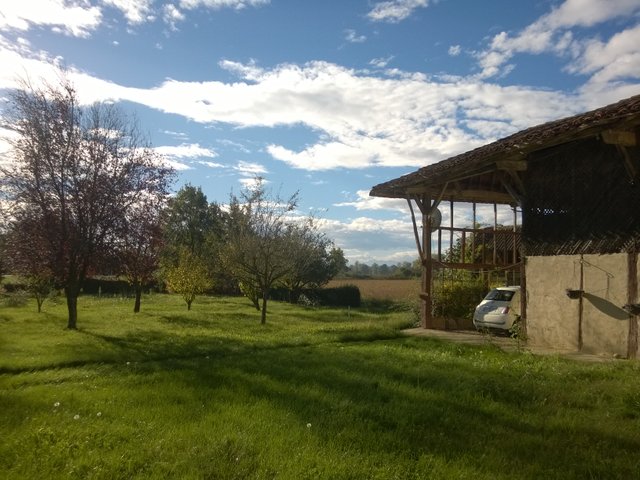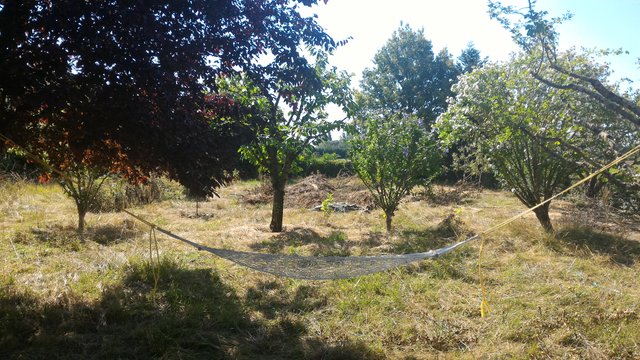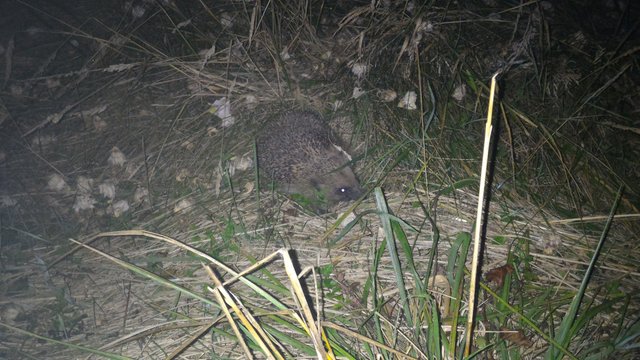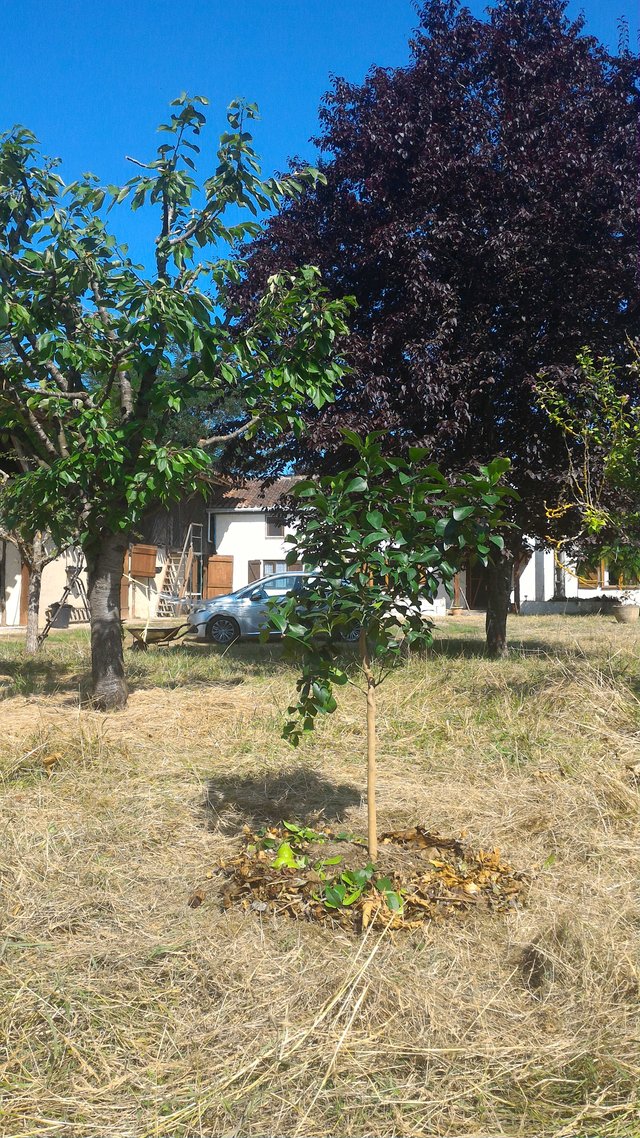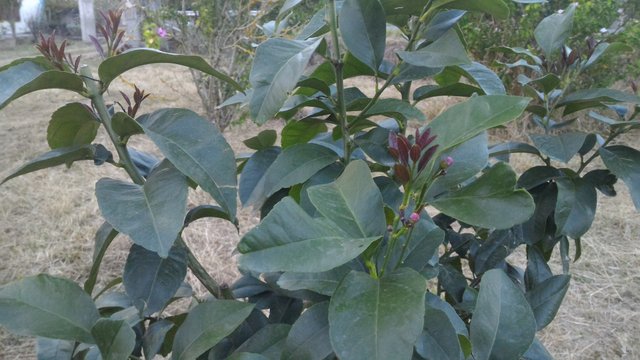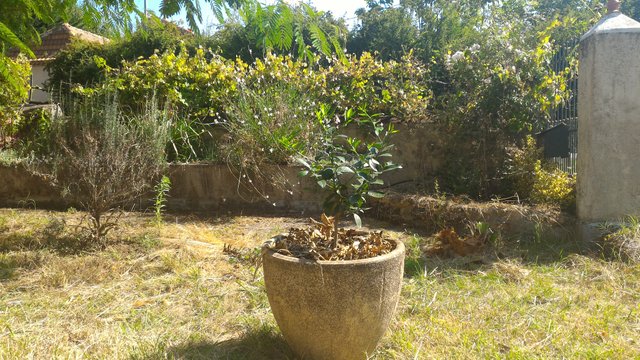The Auberge Garden, Part 3: Observing the Landscape
This is the third part of a series of posts showing what we’ve done with the garden so far. Check out Part 1 and Part 2.
The trees are trimmed and pruned, and now more light is flooding into the garden in the afternoons. Looking over the garden we could begin to make out its underlying shape and nature.
We’d finished mowing, at long last. Some of the grass was matted quite thick, but with a combination of tugging, shearing, and a battery powered strimmer, we’d cleared it. In the barn we found a couple of old mowers, and even a ride-on, but they needed a service. We want to minimize our reliance on petrol as much as possible – not going for full self-reliance, it’s just expensive and machines need maintenance. In time the battery operated tools might be recharged with a small-scale solar setup. Hand operated tools might do the job more slowly, but they give a lot more satisfaction and self-sufficiency. Currently I’m enamoured with the idea of a scythe.
Now we could start to see the contours of the land. It’s fairly flat but does drop on the edges, and a few odd rises in spots. We could better see how the sunlight crossed the garden, what patches the trees shaded and where were the hotspots that sweltered in the long afternoon sun.
These long, slow observation times are essential to planning. And if it wasn’t by necessity, we probably would have jumped right in and started laying garden beds in illogical places, planting trees that we’d spend our lives walking around, or digging something up and regretting it. So almost by accident we learned the value of really spending time observing, getting to know the minutiae of a piece of land, even if at first blush it looked like a flat rectangle with a handful of trees. There is a lot of pleasure to take in observing that slow evolution, even only on the scale of a single season. And there is so much more to learn – how the rainfall evolves over the months, when each tree blooms, what parts die off from lack of light in winter.
As much as we are actively shaping the garden and the landscape, we must learn to be shaped in turn by its needs, to adapt to the land.
Much of the garden is bordered by hedges. We’re not crazy about the hedge, but for the moment it provides us with green material, and a bit of shade. There is something in the idea of using the foundations to build outwards, and while we want to use that space to grow fruit trees, for the moment it is doing a job. Maybe we can plant trees around the hedge if it remains beneficial. For now, at least it’s providing a home for this little guy….
We would have loved nothing more than to purchase a brace of new trees to get the garden cracking, but a few things slowed us down. First, we aren’t there permanently yet. Second, trees aren’t cheap. We popped a few things like apricot and peach seeds in pots, hoping they'd germinate in our absence.
The other thing to consider is what our needs will be long term. While it would be great to fill the yard with fruit trees, maybe we will need that space for staple crops in time. Also, if all our neighbours are growing peaches, would another tree in our yard really add much?
We needed to start small. One thing we could do off the bat is build around the trees that were already there. We planted the beginnings of a guild around the apple tree: nasturtiums and marigolds, strawberries, mustard. They might not all work, but having something planted is better than nothing.
Space inevitably means weeds. They’d had the run of the place for some time, and while we dreaded the task, it was only going to get worse. Stinging nettle, or l’ortie in French, was our first and most ferocious nemesis. First along the front, where it appeared to be trying to find its way inside. Digging out the roots is tough work, but the only real way to do with it. People are understandably reticent about nettle, but it is beneficial – this website is dedicated to it, with some interesting recipes. If not to taste, then if you chop them young they are great mulch. We’ve since learned chickens love the seeds, so that will be another way to deal with it. @the.dudermensch here on steemit has a great post on its benefits.
We couldn’t go without planting at least one tree. A lemon tree is a welcome addition to any garden (and anyone living nearby). Despite the locals’ insistence it wouldn’t survive (winter mornings can get quite cold there), we planted a young lemon tree and gave it a good thick ring of mulch, and hoped for the best. By the time we left, it was flourishing, with plenty of new growth.
Things were starting to take shape nicely, but our time at the Auberge was coming to a close. We still had some material left to deal with, and plans enough to fill a lifetime.
Stay tuned for the final installment to see how the Auberge garden ended up!
